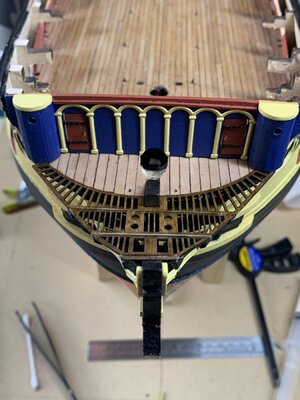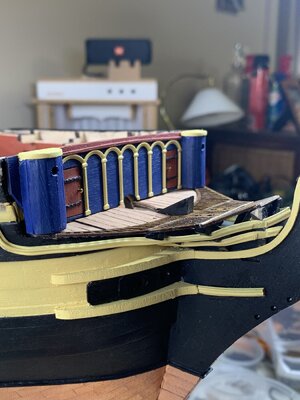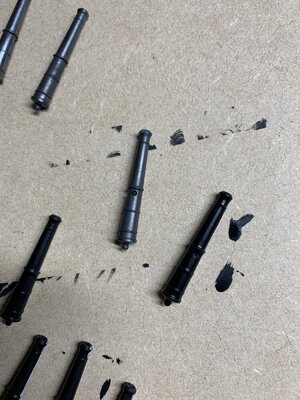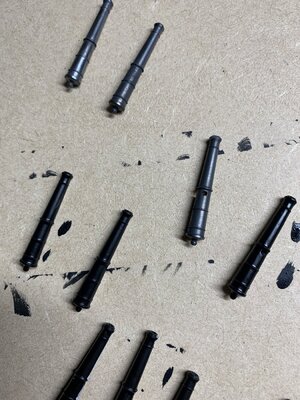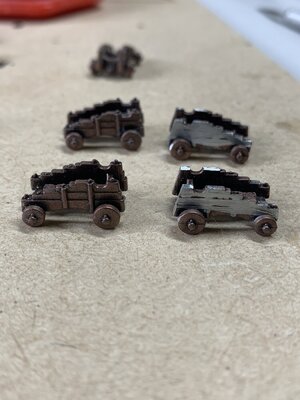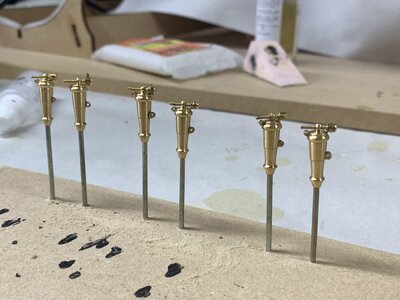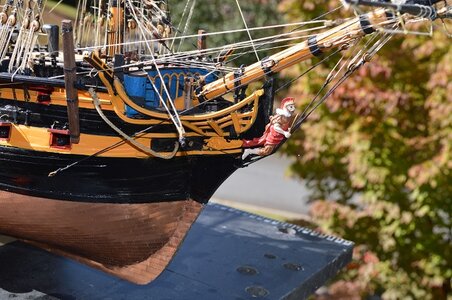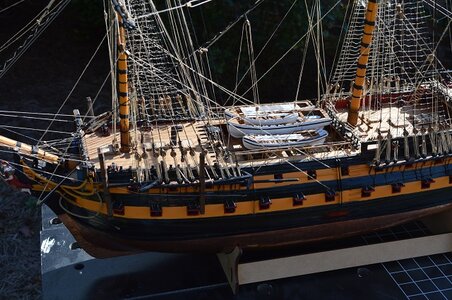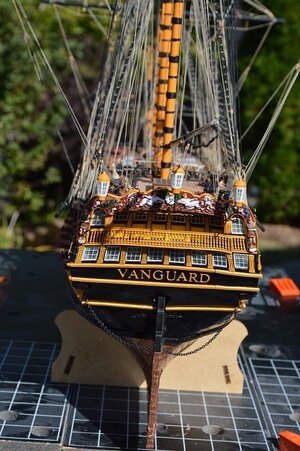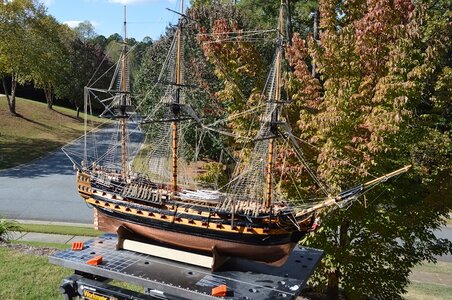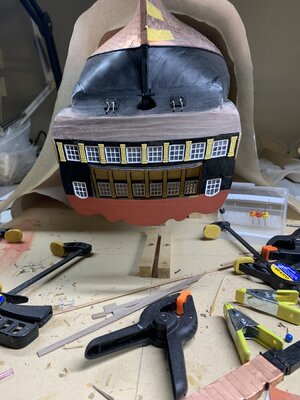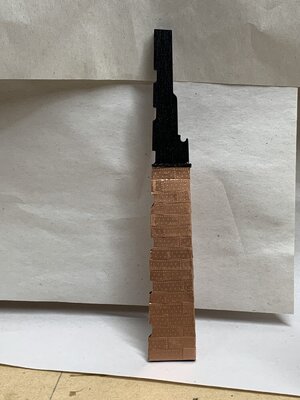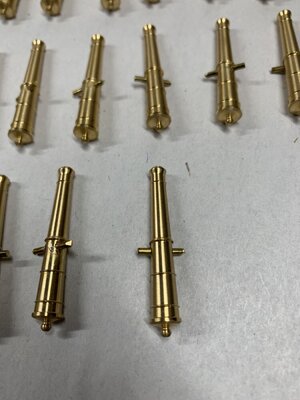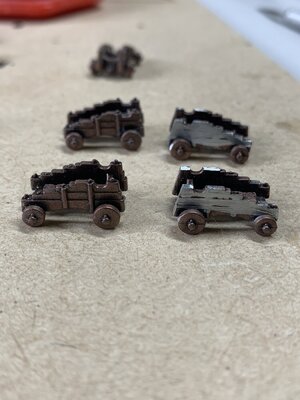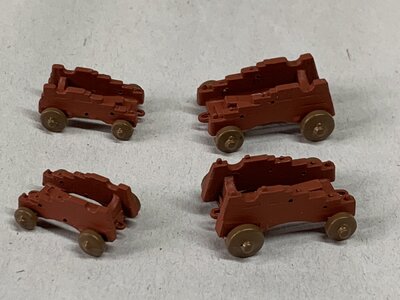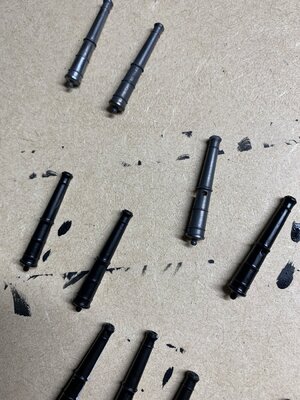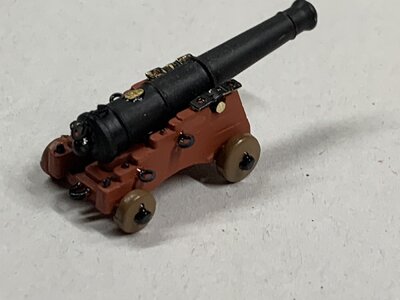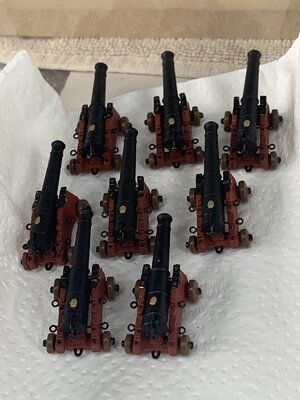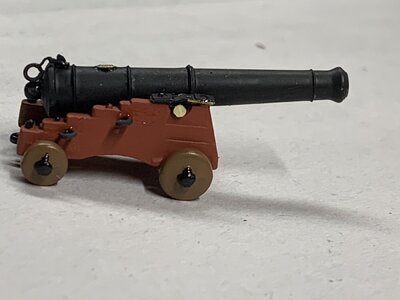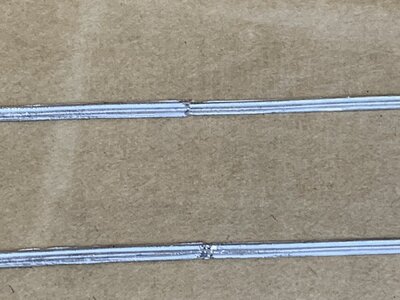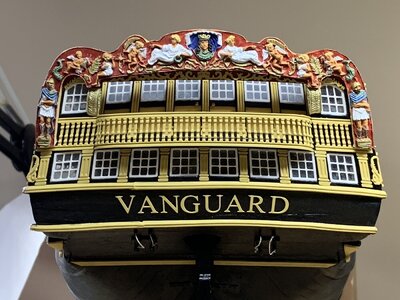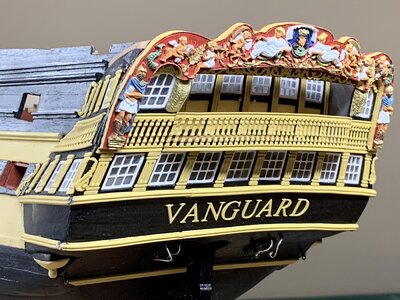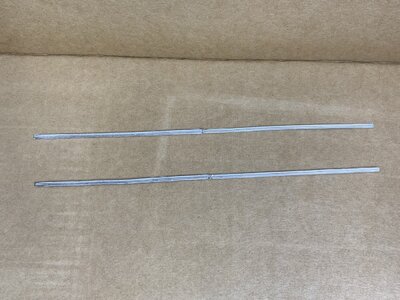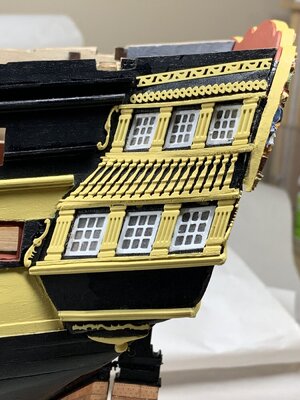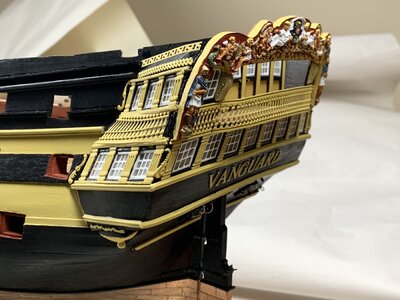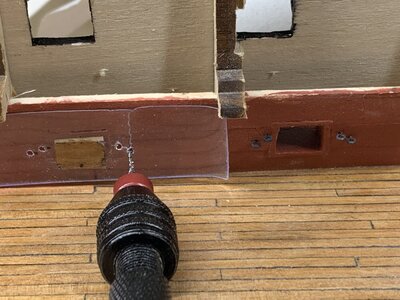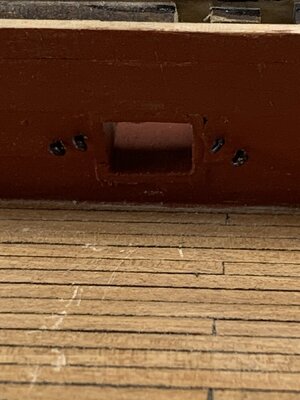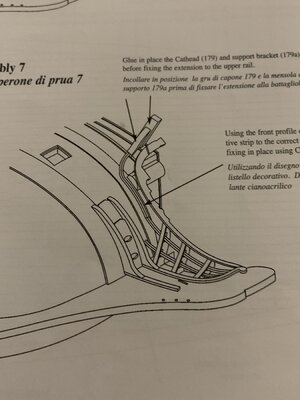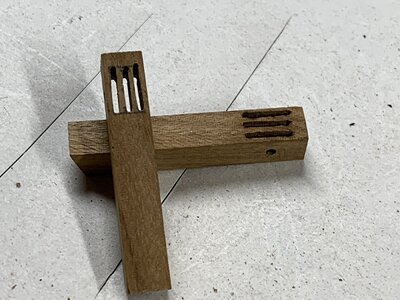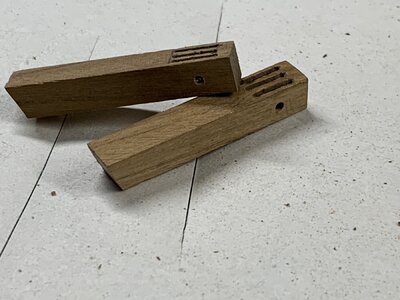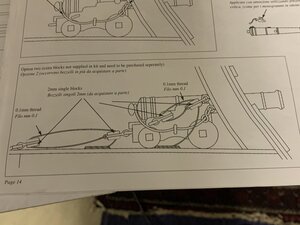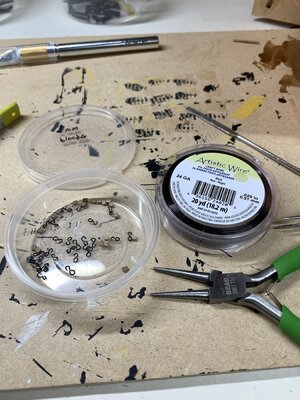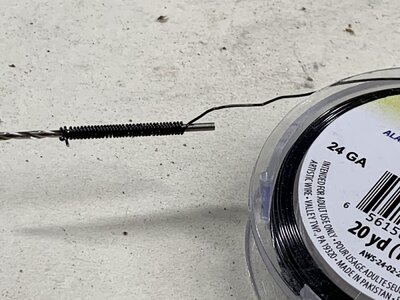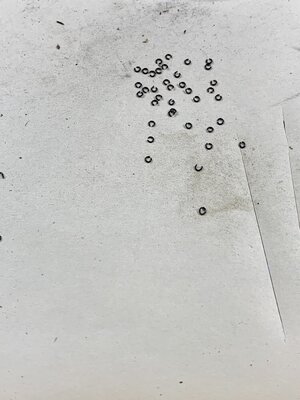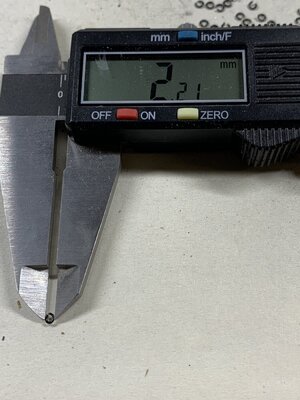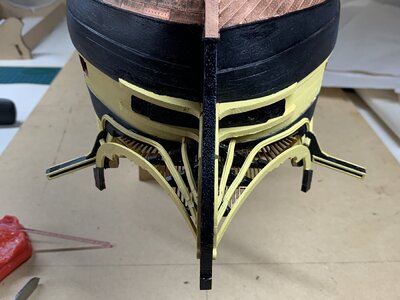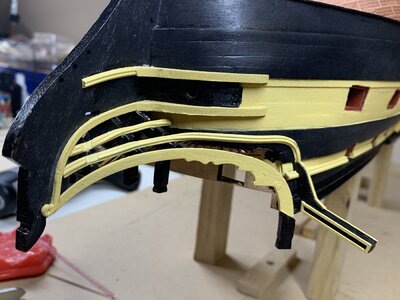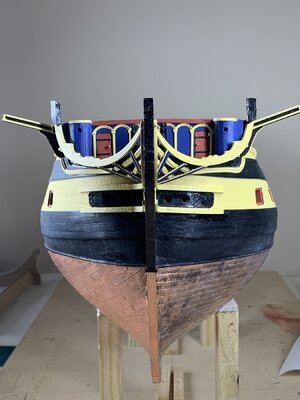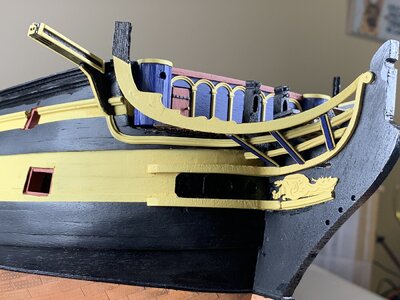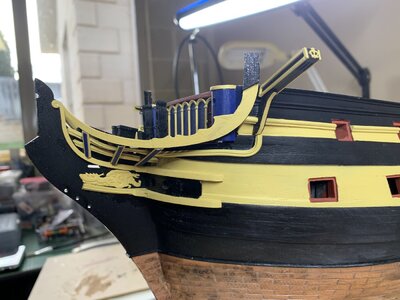Working through bow construction. The sequence of part installation I followed to allow for getting good alignment and also for fine adjustments and work on the parts off the ship when required.
All parts painted before fitting.
1: Fit the trees (head rails). They required some wedging to get a snug fit and prevent any play in the angle, dry fit the grating to set the angle
2: Fit bow upper cheek rail to sit snug up against lower edge of trees, both sides to get symmetry
3: Fit upper bow cheeks to run parallel to wales line
4a: Mark out hawse holes with plate and drill holes with 2.5 mm drill, carefully
4b: Fit hawse plates. As thin ply they are difficult to bend and required some encouragement
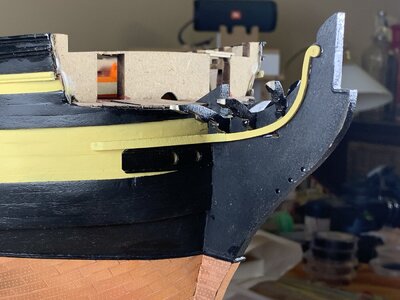
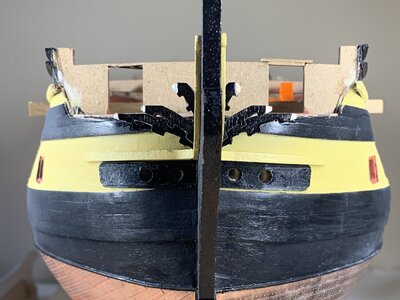
5: Fit lower cheek rail. I substituted the rail for similarly curved and lengthed piece of decorative strip
6: Fit the lower cheek up against hawse plates.
7: Sand the tips of the trees to align with outer edge of gratings
8: Prepare Catheads and support bracket and mark out where fixation occurs as the decorative rails need to be trimmed to allow the cat head to sit flush. Getting the forward angle of the cat head and symmetrical is challenging.
9: it necessary to know the final position of the cat head support to align the upper decorative strip that runs from the tip of the stem along the underside of the trees and onto the bow and curves up to the cat head.
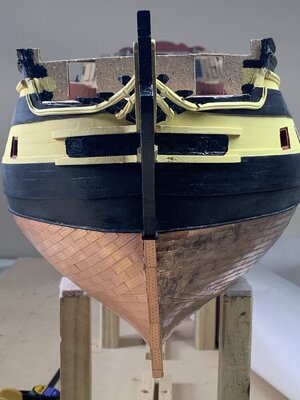
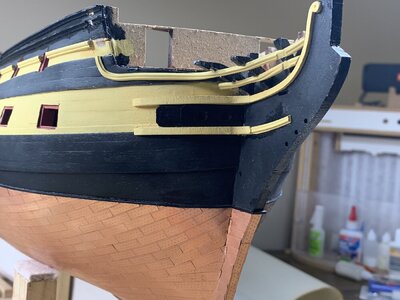
10: Attach lower decorative (shorter) metal strip. Note I filed down the strip in the area where a 1x3 walnut decorative strip is laid to enclose the metal strips.
The decorative strips were shaped and curved with finger pressure and inserted with the ship upside down, which made it much easier to access and tweak the bends.
11: Attach the gratings, largest first. I added some 1x1 walnut strips to get the grates to sit evenly on the trees.
Frontbulkhead and round houses are only dry fitted.
